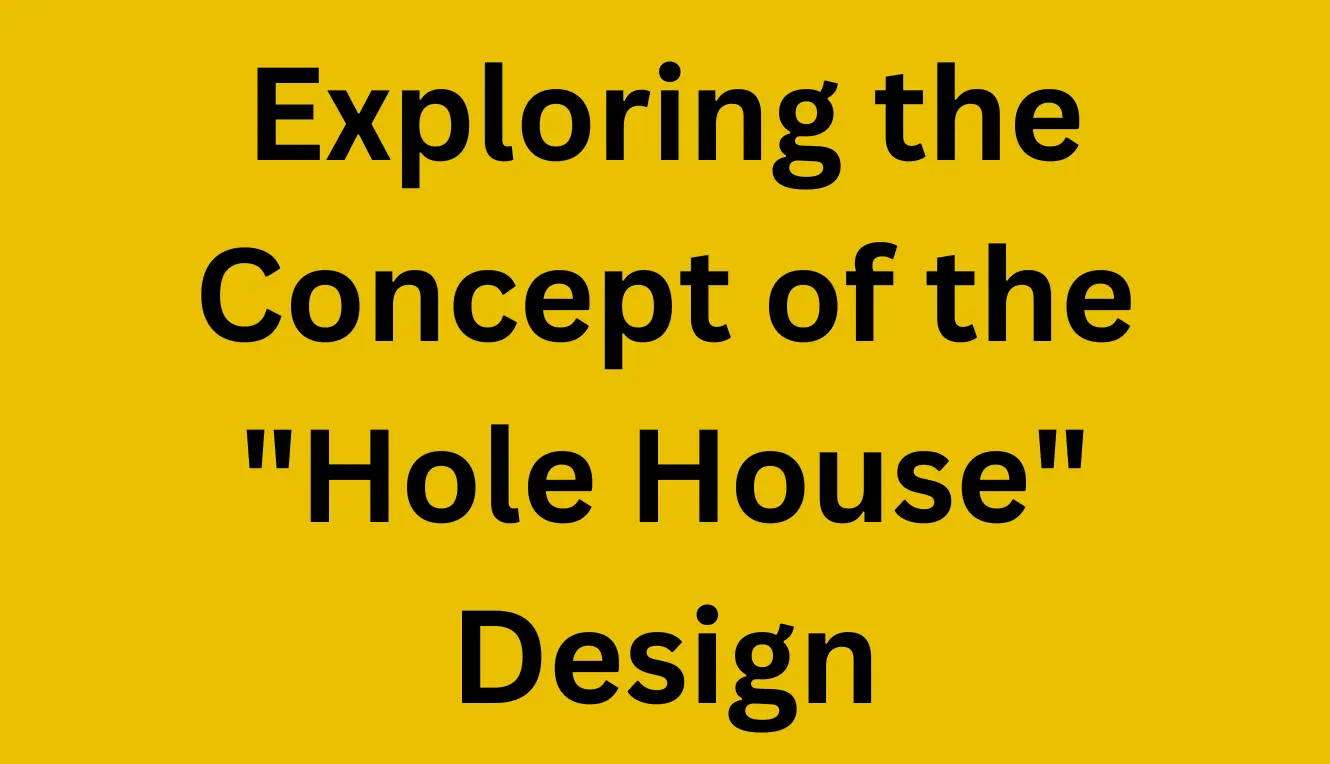The “hole house” design is an architectural concept gaining popularity recently. This design concept involves creating openings or voids in the structure of a building to allow natural light, air, and even vegetation to flow through the system. This article will explore the history and evolution of the “hole house” design, its benefits and drawbacks, and the potential applications of this design concept in modern architecture.
History and Evolution of the “Hole House” Design
The “hole house” design has its roots in ancient architecture, where open courtyards were used to provide natural ventilation and light to interior spaces. In modern times, this concept has evolved to include more complex designs that involve creating openings or voids in the building structure.
One of the earliest examples of the “hole house” design can be found in the works of renowned architect Frank Lloyd Wright. His compositions often featured open floor plans and large windows, which allowed natural light to penetrate deep into the interior spaces. Another influential architect who popularized the “hole house” design was Le Corbusier. Who believed buildings should be “machines for living” that promote health and well-being through natural ventilation and light.
In recent years, the “hole house” design has gained even more popularity, as architects and builders look for ways to create sustainable and energy-efficient buildings that are in harmony with the natural environment.
Benefits and Drawbacks of the “Hole House” Design
The “hole house” design offers several benefits, including:
- Natural Light: The use of openings and voids in the building structure allows natural light to penetrate deep into the interior spaces, reducing the need for artificial lighting and creating a bright and airy atmosphere.
- Natural Ventilation: The “hole house” design also allows for natural ventilation, which helps to regulate indoor temperatures, reduce humidity levels, and improve indoor air quality.
- Energy Efficiency: By reducing the need for artificial lighting and air conditioning, the “hole house” design can help to reduce energy consumption and lower utility bills.
However, the “hole house” design also has some drawbacks, including:
- Structural Issues: Creating openings and voids in the building structure can weaken the overall structural integrity of the building, which can be a concern in areas with high wind or seismic activity.
- Privacy Concerns: Using large windows and openings can also compromise privacy, which may not be desirable in all settings.
- Maintenance Challenges: Using natural materials and vegetation in the “hole house” design can also present maintenance challenges, as these elements require regular upkeep and care.
Potential Applications of the “Hole House” Design
The “hole house” design has potential applications in a variety of settings, including:
- Residential Buildings: The “hole house” design suits residential buildings well. Natural light and ventilation create a comfortable and healthy living environment.
- Commercial Buildings: The “hole house” design can also be applied to commercial buildings, which can help create a more pleasant and productive work environment.
- Public Buildings: The “hole house” design can also be used in public buildings, such as museums and galleries, where natural light and ventilation can enhance the visitor experience.
Conclusion
The “hole house” design is a concept that has been around for centuries but has gained new relevance in recent years as architects and builders seek more sustainable and energy-efficient building designs. While the “hole house” design offers many benefits, it also has some drawbacks that must be carefully considered before implementing this design concept. With proper planning and execution, however, the “hole house” design has the potential to revolutionize the way we

